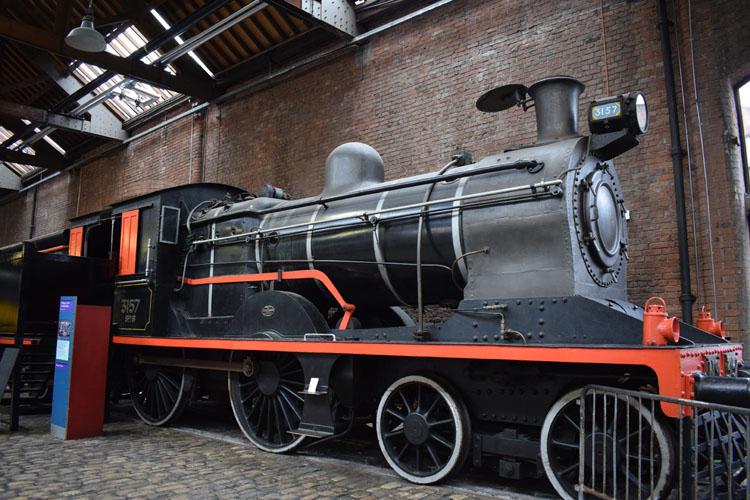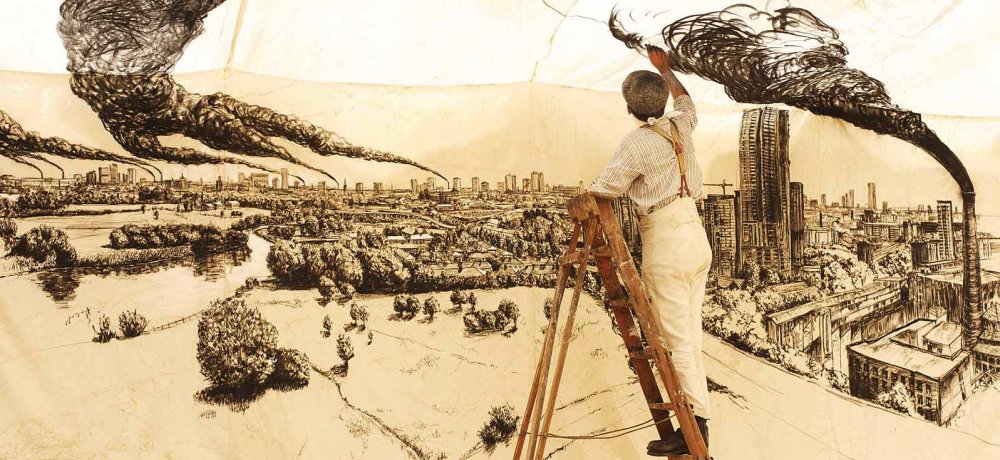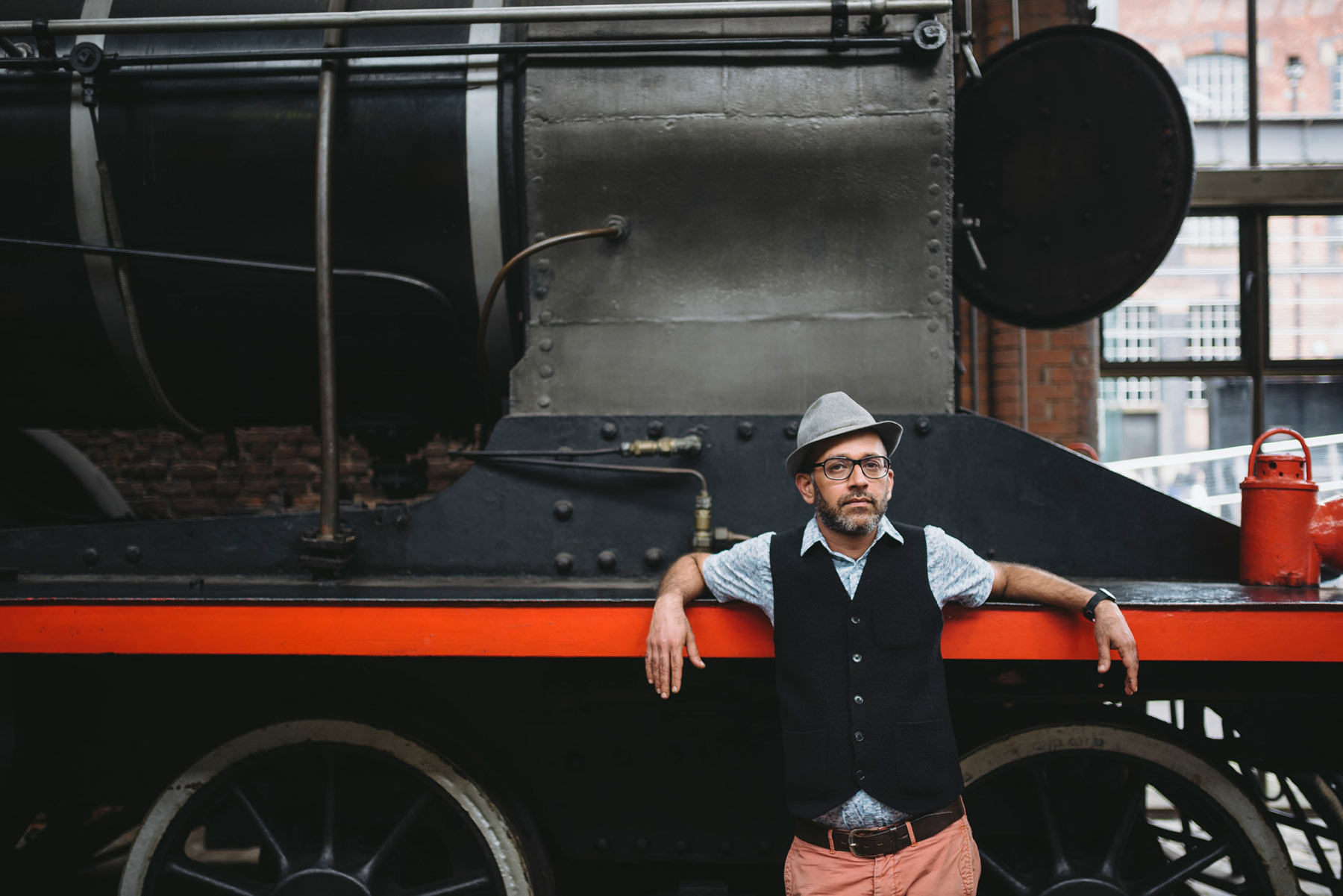
Science Museum Group © The Board of Trustees of the Science Museum
This weekend (29 September – 1 October), the Museum of Science and Industry hosts a very special event. For 48 straight hours, the artist Nikhil Chopra will live, sleep, eat, draw, and perform in the shadow of one of our most impressive locomotives, in a piece called The Blackening: 3157.
His work will weave together the story of Vulcan Locomotive No. 3157 with the history of India and Pakistan 70 years after they became independent countries and the role that railways, one of the legacies of British rule, played in that violent separation. It will also give our visitors the chance to reflect on their own journeys, the meaning of home and what we do if we were forced to move to another place with only a suitcase to our name. It will create a space at the centre of our busy museum to experience something wholly different; a piece of living art that tells the story of our objects and history, in another way—through Nikhil Chopra’s own unique vision.
Chopra is renowned for these long duration performance art pieces centred around the more conventional artistic practice of drawing. As he told The Telegraph (India) in 2015: ‘The live performance is the craft of making the artwork as people watch’.

I saw his previous work here in Manchester, Coal on Cotton. That was a 65-hour performance that took place in a half-built gallery at the Whitworth during its renovation in 2013. During the performance, he silently metamorphosed from a simple farmer who single-handedly raised a cotton tent in the gallery into a Victorian mill worker who drew an intricate, detailed landscape, and lastly into a charismatic titan of industry who ordered his team of workers to take down the tent and then to hoist the finished drawing onto the front of the building.
Part of Manchester International Festival that year, Coal on Cotton had many of the elements that Chopra frequently uses: changing costumed personas, landscape drawing, and a focus on place and history. He says: ‘…every site offers a range of possibilities in terms of content material, backdrops, contexts and audiences.’
In a way, this gets to the root of what performance art is—unlike a painting, performance, even if you employ the same elements, will be naturally different depending on where you are, the audience… even the weather!
His performance at the Museum of Science and Industry will be dominated by the imposing locomotive he has chosen as his backdrop—the 3157 of the title, built in 1911. Its history is fascinating in itself, and you can read about that over two blogs here and here by one of our archivists, Jan Shearsmith.
The story of its work on the Indian railways and subsequently the Pakistan railways was what really drew Chopra to it. His piece is part of a wider focus on the 70th anniversary of Partition, the division of India and Pakistan after decades of British Rule. While independence was a cause for celebration, this tumultuous period was also marked by around 15 million people being displaced and at least 1 million died. Chopra’s own family were part of this mass enforced movement, predominantly done by train and sometimes pulled by locomotives built in the North West like 3157.
Chopra’s work often takes on global history through personal experience, especially through his use of costumed characters. These can range from poor farmers to bejewelled princes and queens, to personas based on his own ancestors. In a 2016 interview with Hindustan Times, he said ‘I am interested in the human experience. What it is that runs through each and every human being and threads us all together as this garland that we call humanity’. It’s an interest that he attributes to the influence of Mahatma Gandhi on his work. ‘In a way, here’s a man who takes performance, let’s not call it art, to empower and liberate a nation.’
This philosophy seems particularly apt for his piece at the Museum of Science and Industry, where he will be exploring the formation of the literal boundary between India and Pakistan, the effect that had on the identity of their people, and the legacy of Britain’s colonial past, all represented through what is now a museum object.
While each visitor will have their own experience of The Blackening: 3157, what I found so fascinating about Coal On Cotton, even outside of the costume changes and bigger moments, was simply watching someone live. Although he rarely has any direct interaction with his audience (unlike other performance-based artists like Marina Abramović), he feels they ‘sustain’ the performance with him:
“In a performance I voluntarily resign myself to the solitary world that my character inhabits, even as I am continuously being watched and gazed at.”
His performances are intimate precisely because of the mundane routines he keeps—how often do we watch a stranger eat, sleep or draw? By making it personal to himself, the performance can make us all look at our own lives, the universal nature of simply living, and the unique story we all have to tell.
Whether you find Chopra’s performance a peaceful 5-minute break during a busy family day out or you spend an evening observing and discussing with friends over a beer, or even if you stay through the night and perhaps share a cup of morning chai with the artist himself, maybe his unique take on art performance can offer some common ground both with the people effected by Partition some 70 years ago and with others right now. As Chopra says, ‘My work is about blurring lines, boundaries and genres to find a place that we all have in common.’
Sources
The Telegraph (India): https://www.telegraphindia.com/1150412/jsp/graphiti/story_13837.jsp
About Nikhil Chopra: http://www.nikhilchopra.net/home/?page_id=1615
Hindustan Times: http://www.hindustantimes.com/brunch/nikhil-chopra-the-chameleon-like-performance-artist/story-IlrFf2ee12ThRarYDW7L0K.html
